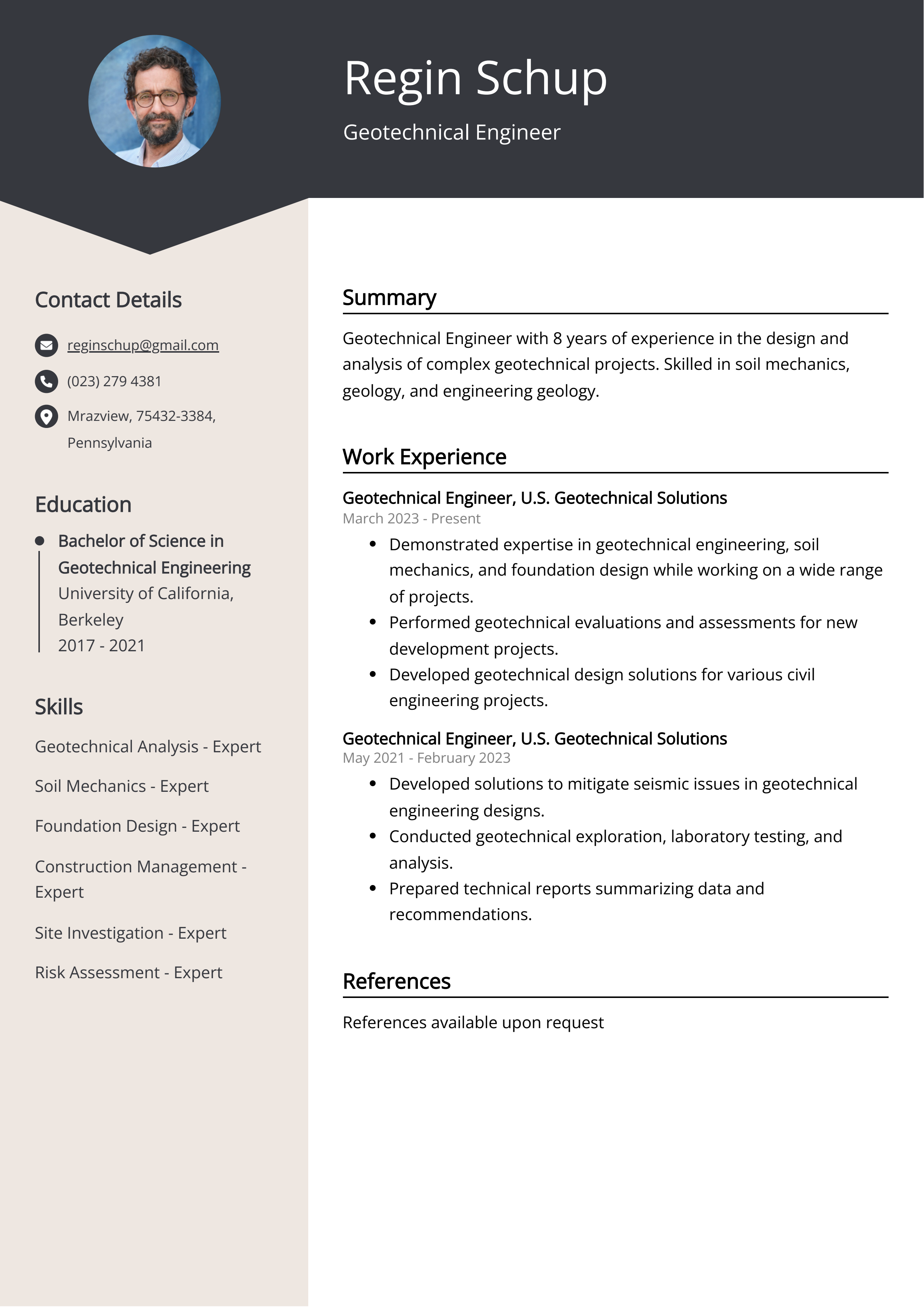Geotheta for Dummies
Geotheta for Dummies
Blog Article
The 10-Minute Rule for Geotheta
Table of ContentsNot known Details About Geotheta How Geotheta can Save You Time, Stress, and Money.Geotheta for DummiesThe smart Trick of Geotheta That Nobody is Talking About
They team up with civil engineers, structural designers, designers, and other experts to integrate geotechnical factors to consider into the general job style and building procedure. This calls for effective synergy, control, and communication to make sure that the geotechnical aspects straighten with the job objectives and meet regulatory needs.Mining & Products Design: Concepts of drilling, penetration prices, and elements influencing the choice of boring technique. Blasting strategies in surface area and underground operations. Mechanical and continual techniques to fragmentation, including longwall shearing and fullface boring.
Modelling of piece and particle dimension distributions; comminution as a transfer feature. Comminution modern technology: squashing, grinding, size classification. Integrated evaluation of fragmentation and comminution procedures. Provided by: Mining & Materials Design.
The Ultimate Guide To Geotheta
Bachelor's degree programs in civil, geotechnical, geological, and environmental design generally last four years and include basic education courses in English, social science, and the liberal arts, along with courses in sophisticated maths, architectural geology, and fluid mineralogy. (https://slides.com/geotheta)
Geotechnical engineering includes the analysis of the dirt and rock problems at a particular website, and their implications for the development of that site. As most structures count on the ground for assistance, it lacks surprise that an in-depth understanding of the ground problems, and the viability of foundation systems, are vital to the long-term security and efficiency of the structure or structure.
Being experts in the examination of geological developments and ground behavior, geotechnical designers perform scientific investigations and screening to recognize the influence these geological formations might carry the design and building of building, civil and framework projects. This experience is important for the layout and building and construction of buildings, roadways, passages, dams, bridges, and water and sewage systems.
The geotechnical group at Douglas Partners regularly consult with designers, layout engineers, designers, and builders to make suggestions on layout and development propositions to make sure that the constructed structures are appropriately developed for the ground problems. As an example, the layout of footing systems requires to consider the weight of the structure, the ability of the ground to sustain that weight along with activity tolerances and reliable construction.
The Single Strategy To Use For Geotheta
This job is significantly streamlined by the use of our Douglas Map geospatial platform which makes this details readily available in a very easy to utilize web browser interface. A geotechnical engineer will certainly guide the drilling of check my reference boreholes and test pits to accumulate dirt and various other samples, and also examine surface attributes and ground direct exposures to form a geotechnical design of the subsurface conditions.
Depending on the task type and ground problems experienced, laboratory testing may to name a few things evaluate stamina, compressibility, sensitivity and/or permeability of dirt and rock samples. Hereafter data is gathered and collated, the outcomes are used for a geotechnical model of the website, which is usually offered as areas throughout the site.

A geotechnical examination naturally can just assess the ground conditions at the areas drilled or dug deep into. All-natural variants in dirt and rock problems can occur throughout a website and between examination locations. It is as a result great practice that the geotechnical engineer be preserved throughout building and construction of the project to give on-site confirmation that the ground problems run into are consistent with the expectations and suggestions offered in the geotechnical examination report.
The Buzz on Geotheta
Geotechnical designers utilize their comprehensive understanding of dirt and rock to assess danger and fix issues on varied infrastructure projectsGeotechnical design is a specialist branch of civil design which considers the behavior of planet products and the application of dirt and rock auto mechanics. Geo Tech Engineer. As a geotechnical engineer, you will assess the physical, mechanical and chemical buildings of soil and rock in order to make structures, retaining structures and earthworks
Geotechnical design is closely connected to and overlaps with, both design geology and ground engineering - https://packersmovers.activeboard.com/t67151553/how-to-connect-canon-mg3620-printer-to-computer/?ts=1722609175&direction=prev&page=last#lastPostAnchor. It's possible to be experts in geotechnics or benefit a geotechnical company however be recognized as an engineering geologist or a ground designer. As a geotechnical engineer, you'll need to: develop and keep connections with customers and various other experts involved in the site, throughout each projectmaintain security standards on site be mindful of cost ramifications when you make recommendationsstudy geological maps and aerial photographs from a variety of resources and from various time periodsexamine building and construction prepares to see exactly how viable they are based on your understanding of the siteinvestigate dangers or geological hazards for the sitesearch for environmentally delicate attributes, such as land fill begin to establish factual and interpretive ground modelsplan area investigationsdrill and analyse examples of bedrock, soil, groundwater and additional products supervise other specialists on sitesolve technological issues as they develop, such as unforeseen structures at drill sitesmonitor conditions throughout and after building to ensure frameworks are steady in the short and lengthy termadding information accumulated on site to your first researchcreating geotechnical calculations, illustrations, and two or three-dimensional computer system designs interpreting the datamaking referrals concerning the recommended use of the website

Report this page